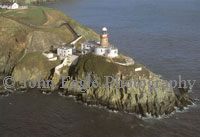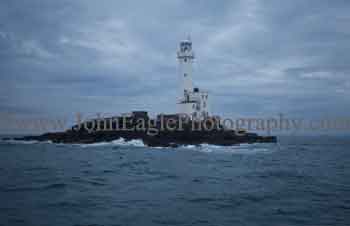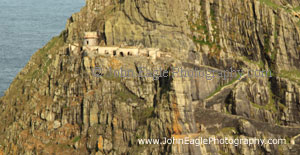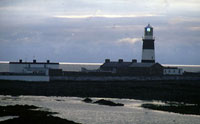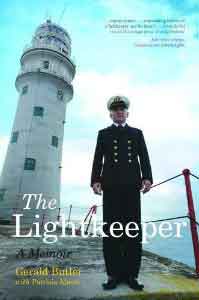John Eagle Photography
| Photographs | My Shop | Books | Art Gallery | Contact |
Halpin Lighthouses Artist, Pamela Griffith and Professor Ross Griffith’s trip to see the lighthouses of the East Coast of Ireland. 2013. On Sunday May 5, 2013 my husband and I began a lighthouse tour with photographer John Eagle, along the Irish East Coast. Accompanying us was Judy Weeks and Keith Morton from England, and Hendrik Schilpzand from the Netherlands. They were a well-informed bunch of people who greatly added to the joy of the trip. I am the great, great, great grand-daughter of George Halpin Senior (1779-1854). I had been looking forward to visiting Ireland all my life as my grandfather, George Halpin of Sydney NSW, had told me many stories of his family who were lighthouse builders. He was born a few days after his family arrived as settlers in Australia and he never visited his homeland. Such was the pride and memories of Ireland, handed down to him from his father, also called George, that he stirred my imagination and I felt that some day I should make the journey for him and for my own pleasure. George Halpin Senior, (1776-1854) and George Halpin Junior, (1804-1869) were active from 1800 – 1855 as port and lighthouse builders. George Senior was responsible for the design, construction, and maintenance of all civil and mechanical works within Dublin Port, from Sutton on the north side of Dublin Bay to Bullock Harbour on the south. This included the management and containment of the River Liffey from Island Bridge and the lower reaches of the rivers Tolka and Dodder. He also oversaw the building of many lighthouses, as well as the modernisation and re-equipping of the previously existing lighthouses. This was in addition to supervising the construction of new docks, bridges and other projects for the expanding Dublin port. He designed and built a new lighthouse every 15 months on average. Most of the construction was by direct labour and these lighthouses included Baily (1813) at the entrance to Dublin Bay, The Baily The Tuskar Rock (1815) guarding the approach to Rosslare Harbour, as well as the Inishtrahull (1813) Wicklow (1816), Skellig Michael (1854) Tory Island (1832) and Fastnet (1854). He effectively rebuilt the Poolbeg lighthouse (1819-20). He managed to take us to 29 lighthouses in the course of six days. He squeezed one extra in on the last day at the remarkable site of Kinsale. He was generous with his time and he sought to help us to fulfil our wish list. Before we left the party a few of us took in the Titanic exhibition in Cobh. There were other benefits that flowed from this tour. We visited the Commissioners of Irish Lights Headquarters and wondered at the very “green in design”, modern building. Engineer Eoghan Lehane, Operations and Property Manager showed us around the building and gave us some vision of the future for Irish Lights now that they are no longer manned. He talked about the search for solutions to the problems associated with the continued management of lighthouses and other properties. We went to the Baily Museum and were looked after by the Consultant Curator to the Commissioners of Irish Lights, Frank Pelly. His knowledge of the work of the Halpin’s was encyclopaedic. I was grateful to him for his professional presentation and we were all very impressed by the articles he has collected for the museum. At no other time has the need been so great to preserve the artifacts and records as major changes are taking place due to technological developments. It is time to preserve the history as I suspect there will be many tourists like myself who will want to know more and will be inquiring about their ancestors. The education of the next generation on the history of Ireland is also an important consideration. Gerald Butler We met Gerald Butler over dinner for a slide show and talk in the old Imperial Hotel, Youghal. I purchased his wonderful book “The Lighthouse Keeper – A Memoir” and I greatly enjoyed his presentation, particularly as I learnt about his mother who was also a lighthouse keeper. I began to realise that this job ran in families and this was a good idea as the children grew up accustomed to isolation and they learnt the skills from their parents. These men and women were a brave and hardy lot. We visited the National Maritime Museum of Ireland in the Mariner’s Church in Dún Laoghaire. Whilst the building is fantastic it is not big enough to display the collection. The Baily Optic is on display and was saved from the Baily lighthouse in Howth, North Dublin. I saw the display that they have set up about the Great Eastern and the laying of telecommunication cables. Its commander was Captain Robert Halpin, a nephew of George Halpin Senior, and a relative of mine. Recently his sword was used by the Prime Minister to cut the ribbon when the new museum was opened, I was moved to see his naval uniform and sea chest. Robert Halpin built Tinakilly House, Wicklow. After the lighthouse tour my husband and I stayed in this house that is now a hotel and we visited the many points of interest in the town that were part of the Robert Halpin self guided trail. On the lighthouse tour of the museum I met Richard Mc Cormick by chance. He runs the National Maritime Museum of Ireland with the help of volunteers. His dedication to the preservation of historical records has led him to find Masters students to assist in cataloguing the vast collection of material. I would like to see more money allocated to this important maritime museum as the history of Ireland is largely the story of the sea, with most threats coming from outside the country from successive invasions. The sea still sustains many families and contributes wealth and jobs. The courage of the seafaring Irish people is certainly on display at the museum. I learnt that the Duke of Wellington was Irish. Another highlight of the tour was a night trip on a fishing boat to Tuskar Rock. The beautiful white tower was worth the pilgrimage. It was built in 1815 by George Halpin. At the Rosslare Maritime Heritage Museum, Rosslare, Co. Wexford we were able to appreciate the good work of volunteers seeking to preserve records of heroic rescues and other related material. This interesting small museum intrigued me as the crafts, such as making miniature ships in bottles, demonstrated some of the traditional craft activities that were undertaken by many dedicated lovers of the sea in their spare time. Meeting people who actually manned rescues or who worked on lighthouses was a delightful feature of the tour that I had not expected. I am enthusiastic to see more of Ireland as three weeks was not enough. I guess I will not be content until I see all the Irish lighthouses. I have learnt that this quest is addictive. My overall impression was that the Irish people are welcoming and kind to tourists and I felt safe and happy throughout the tour. .....Pamela Griffith |
CONTACTJohn Eagle Photography,Eyeries, Beara, Co. Cork. Irelandtel: 027 74275cell: 087 9693745Email: john@johneaglephoto.com |
|||||||||
